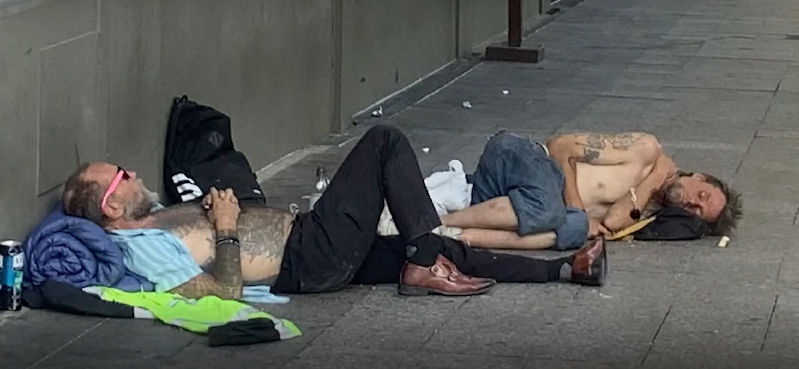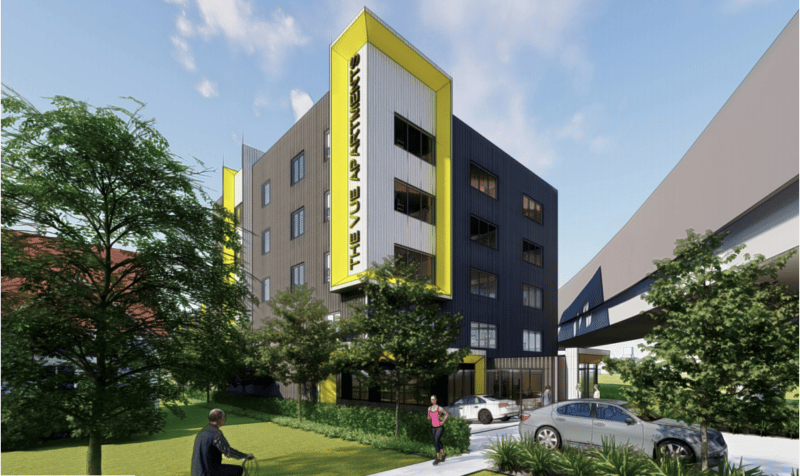
If the homeless abatement policy and program were designed to help the homeless to find a more secure place to camp or stay, perhaps this $1-$2 million per year cost to Salt Lake City taxpayers could be justified. But it could be argued that the opposite is true. The cruelty of moving unsheltered people and families from empty lots who have nowhere else to stay is essentially harassing residents in dire need of assistance.
As we learned last July, Many of the newly unsheltered were evicted or lost their housing due to rental price increases. Instead of receiving assistance, they are getting a boot in the face or in their case a bulldozer to their camp and belongings. Last week we reported how New York Times Journalist, Robin Pendergrast finds the City’s policies abhorrent and inhumane.

Possible Conflict of Interest in Mayor Mendenhal’s Homeless Policies?
Salt Lake City’s Mayor Mendenhal’s husband Kyle LaMalfa is currently developing the Alta VUE Apartments on 800 West between 144 South and 200 South. Recent abatements have occurred nearby at empty lots located at 200 West and 700 South. Two abatements in the past month have occurred there. Is Mayor Mendenhal assisting her husband’s investment by abating the homeless camps in the area?
She would certainly deny any culpability because according to the SLCPD, not even the Police decide where abatements will occur. So who decides? Utah Stories has been unable to find out.
LaMalfa recently changed his opinions regarding affordable housing on the West Side. But others might argue that homeless camps are illegal. They foster illegal and criminal activity. But there is another side to the issue. Which is that the current homeless shelters by design are inhumane.
Why The Current Homeless Resource Model is Not A Fit for Many Unsheltered Utahns
Not only are all of the homeless shelters currently full, but the shelters are not a fit for unsheltered people who wish to maintain their ties with their life partner, spouse, or pet. Not only is the trauma of losing housing difficult enough, but under the current model, partners must be separated from loved ones. Only single transients are allowed to find a shelter if they are priced out of the current housing market, in which rents have increased by 25% in the past year. Stacy Johnson addressed this issue for us in greater detail in a previous podcast and article.
Utah Stories recently interviewed a single-parent mother named Brooke, who was squeezed out of the housing market because she says her rent was doubled and she had poor credit. Now she finds herself living on the streets in a tent without consistent access to water in 105-degree heat. Brooke is not alone, several other recently homeless people, unable to find housing, we spoke to were either living out of RVs, cars, and tents who just wanted to be provided the security of not being forced to move every two weeks, so they could get work and save money for a new apartment.
Abatements, they say, are preventing them from getting off the streets. Camps help the homeless protect themselves from those who might do them harm. There is safety in numbers. Camping along in the streets or in a park makes homeless individuals even more vulnerable to robbery or attack.
So what is the solution to the current homelessness and housing crisis? We offered one option in this Op-Ed about collapsable tiny homes, which cost $50,000 per unit. But an even more simple solution would be to set up a homeless camp with Porta-Potties and a dumpster, where homeless individuals are allowed to stay in tents or their RVs. Denver has found success in a model similar to this.
RELATED STORIES
Investigating Homelessness Death and Public Safety in Utah
New York Times Journalist Appalled by the Homeless Situation in Salt Lake
The Other Side Academy in Salt Lake City Reforms Criminals, Convicts, Drug Addicts and Alcoholics
SUPPORT LOCAL JOURNALISM AND SUBSCRIBE TO PRINT MAGAZINE
Subscribe to Utah Stories weekly newsletter and get our stories directly to your inbox





